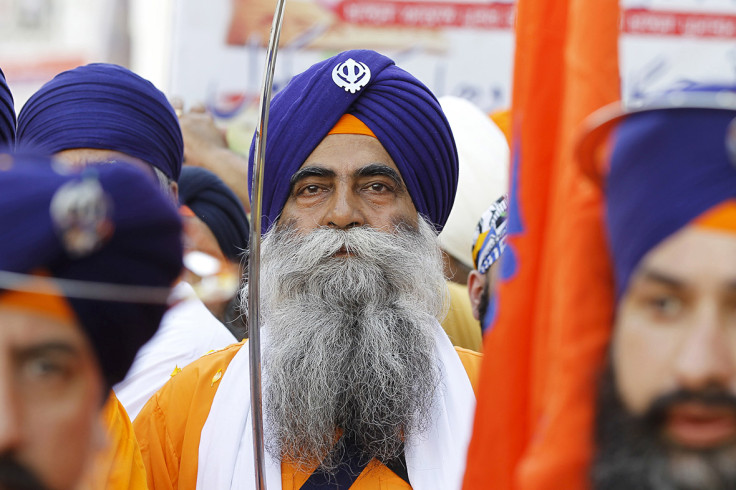Vaisakhi: When is the Sikh festival and what is it all about?
It is one of the most significant dates in the Sikh calendar.

Celebrations for the Sikh festival of Vaisakhi have taken place around the world in the last week, marking one of the most significant dates in the Sikh calendar.
It falls on 13 April (or sometimes on 14 April) and celebrates the collective birthday of the "Khalsa brotherhood" which was created by the 10th Guru of the Sikhs, Guru Gobind Singh, in 1699. For centuries, the festival has marked the harvest in the Punjab. Vaisakhi is one of the main festivals celebrated by Sikhs, the others being Maghi and Diwali.
What is the history behind Vaisakhi?
On the date of Vaisakhi in 1699, Guru Gobind Singh, born Gobind Rai, laid the foundation of the Sikh community known as the Khalsa. The guru wanted to create a unified group of people within the religion to defend their rights and those of the vulnerable.
He asked for five Sikhs to come forward and sacrifice their lives to him. Silence followed, but then one man came forward and was led into a tent by the guru. The guru emerged with a sword covered in blood and asked for a second volunteer. Another man stepped forward and was also taken into the tent. This was repeated five times. Every time a volunteer went into the tent, the guru would emerge with a sword covered in blood.
Finally, the five Sikhs came out of the tent dressed in turbans. Guru Gobind Singh announced that a new group called the Khalsa had been founded. The five were to be known as the Panj Pyare, or the Five Beloved Ones.
The Panj Pyare were baptised into the Khalsa by Gobind Singh – who sprinkled them with "immortalising nectar" known as Amrit, the Sikh term for holy water. This initiation rite formed the basis of the Sikh baptism ceremony.

How is it celebrated?
Colourful processions called Nagar Kirtans take place around the world, including the UK. Gurdwaras, the place of worship for Sikhs, host celebrations during the weeks of Vaisakhi, where readings of Sikh scriptures take place. The singing of hymns from the Guru Granth Sahib, the Sikh holy book, also takes place – known as Kirtan.
In India, the main celebration takes place at Talwandi Sabo, where Guru Gobind Singh stayed for nine months, completing the recompilation of the Guru Granth Sahib. Major celebrations will also be held at the birthplace of the Khalsa, Anandpur Sahib, and at the Golden Temple in Amritsar.
Vaisakhi is widely celebrated by Sikhs in Western Punjab, with celebrations in the Panja Sahib complex in Hasan Abdal and historical sites in Lahore.
Vaisakhi or Baisakhi?
The word Vaisakhi is written as Baisakhi when related to celebrations of the birth of Khalsa, or specifically to Sikhs. The standard spelling is Vaisakhi, but it also depends on dialects. In the Doabi and Malwi dialects of Punjabi, it is common for speakers to substitute a "B" for a "V".
Does Vaisakhi mark the beginning of a new year?
Vaisakhi is a celebration of the new year in the Sikh calendar, Nanakshahi. The festival coincides with New Year's Day in the Assam Valley, Kerala, Odisha, West Bengal, Punjab, Haryana, Uttarakhand and other regions of India.
The festival is also an important date for some Hindus, notably those in the Punjab region, for whom Vaisakhi marks the beginning of a new solar year to be celebrated with worship and parties.
© Copyright IBTimes 2025. All rights reserved.





















